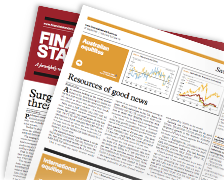Job flexibility, labour market delay retirement ageBY KARREN VERGARA | WEDNESDAY, 10 APR 2024 12:40PMJob flexibility and a tight labour market are keeping more Australians at work, research from KPMG finds, giving rise to a delay in their retirement. The analysis found that men are retiring at 66.2 years old, from 63.3 years old two decades ago, while women are pushing retirement age to 64.8 years old from 61.6 years old. Over the last two years, however, the expected retirement age for both men and women are unchanged, which suggests a fundamental shift in labour market dynamics post-COVID. KPMG urban economist Terry Rawnsley said the adoption of working from home has made many older Australians in professional jobs realise that they could 'semi-retire' and continue to dabble in the workforce from home or even from a coastal location. Since the onset of the pandemic, women have been increasingly drawn into full-time employment, with the expected age of retirement from full-time work increasing by more than a year. Mens' increased expected retirement age on the other hand, was driven by increases in part-time employment. Geographically, Perth has the highest expected retirement age for women and the second highest for men. Inversely, Melbourne has the highest retirement age for men and the second highest for women. Meanwhile, lower expected age of retirements for Sydney and Brisbane can be linked to people leaving cities and moving to nearby coastal areas such as the Central Coast, Sunshine Coast, and Gold Coast once they exit the workforce. "Even in a tight labour market, we may have reached a plateau in the expected age of retirement, suggesting we cannot expect older workers to continue working longer. This is because we simply can't find enough older workers to sustain the growth that occurred during the COVID-19 era," Rawnsley said. Related News |
Editor's Choice
Super Members Council appoints inaugural chair
|Generation Development Group to take over Lonsec
|Equip Super names chief experience officer
|APRA warns entities on adequacy of backup systems
| Sponsored by Sponsored by | Know the facts about lifetime annuitiesSaving for a happy retirement is Australia's #1 financial goal. Learn how LifeIncome can deliver more income, certainty, & choice. |
Products
Featured Profile

Jason Huljich
CENTURIA CAPITAL LIMITED

























